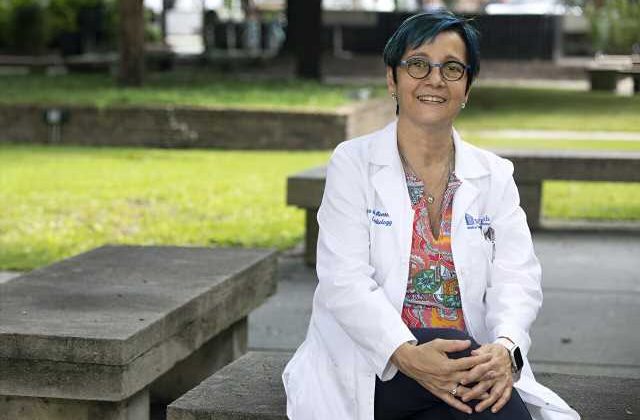
The passing of June’s summer solstice, the longest day of the year, prompts reflection on all of the ways people work to shine a light in the darkness. June is also Alzheimer’s Awareness Month, a time in which we strive to fight back the darkness of dementia. In a world with an aging population, Alzheimer’s disease (AD) is an ever-present and ever-growing shadow.
Federica del Monte, M.D., Ph.D., Medical University of South Carolina professor and director of the Christie Heart and Brain Center and Human Heart Biobank, is working to defeat the shadows. Interestingly, her work focuses on an area many people may not associate with AD—heart failure.
“The same proteins that are characteristic of Alzheimer’s disease, Amyloid beta and the pathological form of Tau, are present in the hearts of patients with heart failure but also in the hearts of patients that were not diagnosed with heart failure but were diagnosed with Alzheimer’s,” said del Monte.
del Monte and her research team reported in a recent study published in the European Heart Journal that people with AD may also be at risk for a particular type of heart failure, one that many people aren’t aware of. Most commonly, when a person hears the term heart failure, they picture the type where the heart has trouble pumping hard enough to push blood out into the body.
But there is another, less commonly thought of form of heart failure where the heart is too stiff and cannot relax to allow blood in before pumping. Much like the more commonly known type of heart failure, this type can also lead to fatigue, shortness of breath, swelling in the legs and weight change among other disruptive effects.
The study also provides hopeful insights into designing potential therapeutics. In her recent work, del Monte applied a novel antibody therapy. This type of therapy works by using antibodies that her collaborator’s team (Rakez Kayed, Ph.D., from the University of Texas Medical Branch) created to seek out and remove the unique type of toxic fragments of Tau, including the one referred to as “Big Tau,” which del Monte has identified in the heart.
So far, results from preclinical models are promising. Mice that have these protein markers were treated with the designed antibodies, which led to improved heart function and removal of the “Big Tau” fragmented clusters in heart tissue.
“It seems that in the heart, it takes a little bit longer than in the brain to have an effect, but it seems to be effective,” said del Monte. “Whether this is going to be a therapy, we don’t know yet, and that’s our next goal.”
del Monte and her team are looking next to study this unique cause of heart failure on a global scale. Before this therapy can be tested in the clinic, it is critical to understand more fully how common this type of heart failure is, who it affects and how it affects them.
“We need this next step, which is studying many patients to characterize exactly what we have in front of us,” del Monte explained.
Her existing work was based on human samples and animal studies but on a much smaller scale. A large-scale perspective would allow researchers initially to see how this form of heart failure affects the general population, and this means working with other scientists across borders and oceans.
“We want to first understand what’s going on in the population clinically, and then if the clinical data supports what we found in the tissue samples and in the mice, then we will already have a selected patient population that we could go to with the second step of treatment,” she explained.
del Monte described how she is also hoping to develop a simple and affordable method for detecting whether a patient who has or is at risk for AD also has these markers in their hearts, which could indicate an increased risk for heart failure. Current methods require expensive PET scans that can be difficult for both researchers and patients to cover the costs.
“We would like ideally to find a biomarker where we tell the patient that they probably have the markers for this disease,” said del Monte. “But we are at the infancy of this study.”
Until such a time, the goal is to build awareness and make sure that people who have, are at risk of developing or care for someone with AD know that there is the potential to look for characteristics of AD other than just behavioral changes. Learning is a process, and providing the resources needed to understand AD more comprehensively is a top priority.
“The caregivers of patients with Alzheimer’s already have a lot on their shoulders, and they’re not prepared to face the complications that heart failure will bring to the patients,” said del Monte. “Raising awareness is important so that they are prepared, and they do not panic when this happens, and they know what to do.”
More information:
Marco Luciani et al, Big tau aggregation disrupts microtubule tyrosination and causes myocardial diastolic dysfunction: from discovery to therapy, European Heart Journal (2023). DOI: 10.1093/eurheartj/ehad205
Journal information:
European Heart Journal
Source: Read Full Article
